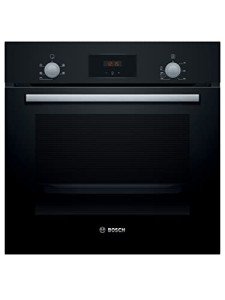Don't Buy Into These "Trends" About Built-In Cookers

The Rise of Built-In Cookers: A Comprehensive Guide
Recently, built-in cookers have acquired significant appeal amongst house owners and culinary lovers alike. These appliances effortlessly incorporate into kitchen styles, using a blend of functionality and visual appeals. As innovation continues to progress within the kitchen appliance sector, built-in cookers have transformed from simple benefits into vital tools for contemporary cooking. This post explores various aspects of built-in cookers, including their types, advantages, installation considerations, and upkeep tips.
What are Built-In Cookers?
Built-in cookers are kitchen appliances deliberately developed to be integrated into kitchen cabinetry or counter tops. Unlike freestanding built in double oven and hob packages that inhabit standalone area, built-in cookers boost the kitchen's overall style by providing a seamless look. They are often part of a coordinated set that may consist of ovens, microwaves, and stovetops.
Types of Built-In Cookers
Built-in cookers come in different types, each catering to specific cooking styles and choices. The following table outlines common types of built-in cookers:
| Type | Description | Advantages |
|---|---|---|
| Built-In Ovens | Wall-mounted or integrated ovens that conserve flooring area. | Save space; simple access; visual appeal. |
| Built-In Cooktops | Stovetop units installed straight into the countertop. | Flexible design choices; offered in gas, electric, or induction. |
| Microwaves | Built-in microwaves incorporate into cabinets for a structured appearance. | Saves countertop space; modern style. |
| Combination Ovens | Ovens that integrate standard and microwave cooking functions. | Adaptability; much faster cooking times. |
| Steam Ovens | Usage steam for cooking, protecting nutrients and flavors. | Much healthier cooking; suitable for vegetables and fish. |
Benefits of Built-In Cookers
Purchasing built-in cookers uses various benefits that appeal to both performance and design. Below are some of the essential benefits:
1. Area Efficiency
Built-in cookers maximize offered space, making them perfect for smaller sized kitchen areas. They offer a streamlined look without jeopardizing cooking abilities.
2. Style Integration
These appliances blend perfectly into kitchen cabinetry, improving the total aesthetic. Homeowners have different style choices, enabling them to produce a cohesive kitchen appearance.
3. Improved Accessibility
Built-in ovens positioned at eye level remove the requirement to flex down to check food, making cooking a more accessible experience for everyone, including those with mobility challenges.
4. Versatile Cooking Options
With many designs and performances, built-in cookers allow diverse cooking methods. Home cooks can pick appliances that best suit their cooking choices.
5. Increased Home Value
Trendy built-in cookers can improve the home's general value, particularly in competitive genuine estate markets. Purchasers often choose fully equipped cooking areas.
Installation Considerations
While built-in cookers provide lots of advantages, their installation requires careful preparation. Here are important aspects to think about:
- Space Measurement: Before acquiring any built-in cooker, it's important to measure the designated location properly. Appliances require to fit flawlessly within existing cabinets, leaving appropriate ventilation area.
- Electricity and Gas Supply: For built-in electrical cookers, ensure that sufficient electric circuitry is available. Gas cookers require appropriate gas line setup.
- Professional Installation: Due to their intricacy, built-in cookers frequently require professional setup. Working with an expert guarantees safety and appropriate operation.
- Upkeep Access: Consider how the cooker will be accessed for cleaning and maintenance. Accessibility must remain a concern during installation.
- Compatibility with Other Appliances: Ensure that brand-new built-in cookers are suitable with existing kitchen appliances for a cohesive style.
Maintenance Tips for Built-In Cookers
Keeping built-in cookers in top condition boosts their efficiency and durability. Here are some upkeep suggestions:
- Routine Cleaning: Regularly tidy the oven and cooktop surfaces to avoid accumulation of grease and gunk. Make use of non-abrasive cleaners ideal for the home appliance product.
- Examine Connections: Regularly examine gas lines and electrical connections for security. Instantly attend to any indications of wear or damage.
- Replace Filters: Many built-in ovens and microwaves consist of filters that need replacement. Follow the maker's guidelines for changing these components.
- Calibration: Over time, built-in ovens might need recalibration to guarantee accurate temperature level settings. Consult the user manual for standards on how to recalibrate.
- Specialist Service: Schedule expert maintenance checks occasionally to make sure that all elements operate efficiently.
Built-in cookers represent a significant development in kitchen design and performance. Their seamless combination into kitchen cabinetry not just boosts the aesthetic appeal of a kitchen but likewise enhances efficiency and use. By comprehending the various types of built-in cookers, their benefits, and considerations for setup and upkeep, property owners can make educated options that raise their cooking experience.
Frequently Asked Questions (FAQs)
1. Are built-in cookers more expensive than freestanding models?
While built-in cookers may have a greater preliminary expense, they often supply enhanced installation aesthetic appeals and higher functionality, making them a rewarding financial investment for lots of house owners.
2. Can I install a built-in cooker myself?
Though some property owners choose to install built-in cookers themselves, it is often advisable to employ an expert due to the complexities included, especially with gas lines and electric electrical wiring.
3. How do I select the right built-in cooker for my kitchen?
Consider your cooking practices, kitchen style, and area restrictions when picking built-in cookers. It's likewise important to evaluate the power source and desired performances.
4. What is the life-span of a built-in cooker?
With proper maintenance, built-in cookers, particularly ovens, can last several years-- often varying from 10 to 20 years, depending on the brand and use.
5. Are built-in cookers energy-efficient?
Numerous contemporary built-in cookers include energy-efficient technologies, such as convection cooking and wise functions, which can assist decrease energy intake.
Built-in cookers use a sophisticated option to contemporary cooking needs while enhancing the kitchen's total esthetic. As cooking trends continue to evolve, these appliances will likely stay an integral part of kitchen styles for many years to come.

